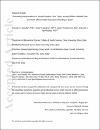Estimating Seroprevalence of Herpes Simplex Virus Type 1 among Different Middle East and North African Male Populations Residing in Qatar
Abstract
HSV-1 epidemiology in the Middle East and North Africa (MENA) remains poorly understood. Our study aimed to measure HSV-1 antibody prevalence (seroprevalence) and its age-distribution among select MENA populations residing in Qatar. Sera were collected from male blood donors attending Hamad Medical Corporation 2013-2015. A total of 2,077 sera were tested for anti-HSV-1 antibodies using HerpeSelect® 1 ELISA IgG kits (Focus Diagnostics, USA). Robust Poisson regression was conducted to estimate adjusted infection prevalence ratios. Country-specific HSV-1 seroprevalence was estimated for 10 national populations: 97.5% among Egyptians, 92.6% among Yemenis, 90.7% among Sudanese, 88.5% among Syrians, 86.5% among Jordanians, 82.3% among Qataris, 81.4% among Iranians, 81.4% among Lebanese, 80.5% among Palestinians, and 77.0% among Pakistanis. Age-specific HSV-1 seroprevalence was estimated for Egypt, the Fertile Crescent (Iraq, Jordan, Lebanon, Palestine, and Syria), and Qatar. Seroprevalence increased with age among Fertile Crescent and Qatari nationals. Seroprevalence increased from 70.0% among those aged ≤24 years up to 98.0% among those aged ≥55 years among Fertile Crescent nationals. Seroprevalence was consistently above 90% for all ages among Egyptians. HSV-1 seroprevalence is high in MENA, though with some variation across countries. The seroprevalence appears to have declined among current young age cohorts compared to its levels a few decades ago.
Collections
- Biomedical Research Center Research [808 items ]
- Biomedical Sciences [833 items ]


